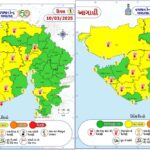As a conscious citizen of Gandhinagar, I feel compelled to share my thoughts and concerns on the recent announcement of the Nagarvan project. The state government plans to develop a city forest called Nagarvan within the 50-hectare area of Indroda Nature Park, with a budget of two crore rupees. While the project promises exciting facilities like Flower Valley, Grass Valley, and Bambusetum, it is essential to examine the potential impact on our city’s green cover and the environment at large.
Gandhinagar’s Green Cover: A Declining Legacy
Once known as a green city, Gandhinagar has witnessed a worrying decline in its green cover in recent years. The Forest Department, which should have taken the responsibility to protect and nurture the city’s greenery, has seemingly contributed to the problem. It is disheartening to see that the very department that should be our city’s guardian has removed the green cover from Gandhinagar, leaving us with an uncertain future.
The Nagarvan Project: A Double-Edged Sword
While the Nagarvan project aims to bring the experience of the forest to the city dwellers, it comes with a heavy price. The proposed tourist spot will require significant development, which will inevitably lead to the cutting down of trees and the disruption of the existing ecosystem. Human activities within the newly established Nagarvan will further disturb the environment, adding to the already growing list of concerns.
A Plea for Conscious Development
As a conscious citizen, I urge the authorities to rethink the Nagarvan project and its impact on the environment. While it is essential to provide city dwellers with opportunities to connect with nature, it must not come at the expense of our city’s green cover and the delicate balance of the ecosystem.
Alternatives and Solutions
It is vital to explore alternative solutions that can preserve the existing green cover while providing access to nature for the citizens of Gandhinagar. Some possibilities include:
- Implementing stringent regulations to protect and restore the green cover in the city.
- Adopting an eco-friendly approach to tourism by minimizing tree cutting and other disruptive activities.
- Encouraging community participation in afforestation programs and promoting environmental awareness among citizens.
- Developing small-scale urban parks and gardens that can offer a green space for city dwellers without the need for large-scale deforestation.
Conclusion
As we move forward, it is crucial to remember that our actions today will shape the future of Gandhinagar and the environment. The Nagarvan project may seem like a promising venture, but it is essential to evaluate its long-term consequences. Let us come together as conscious citizens to demand sustainable and environmentally friendly solutions for our city and the generations to come.







